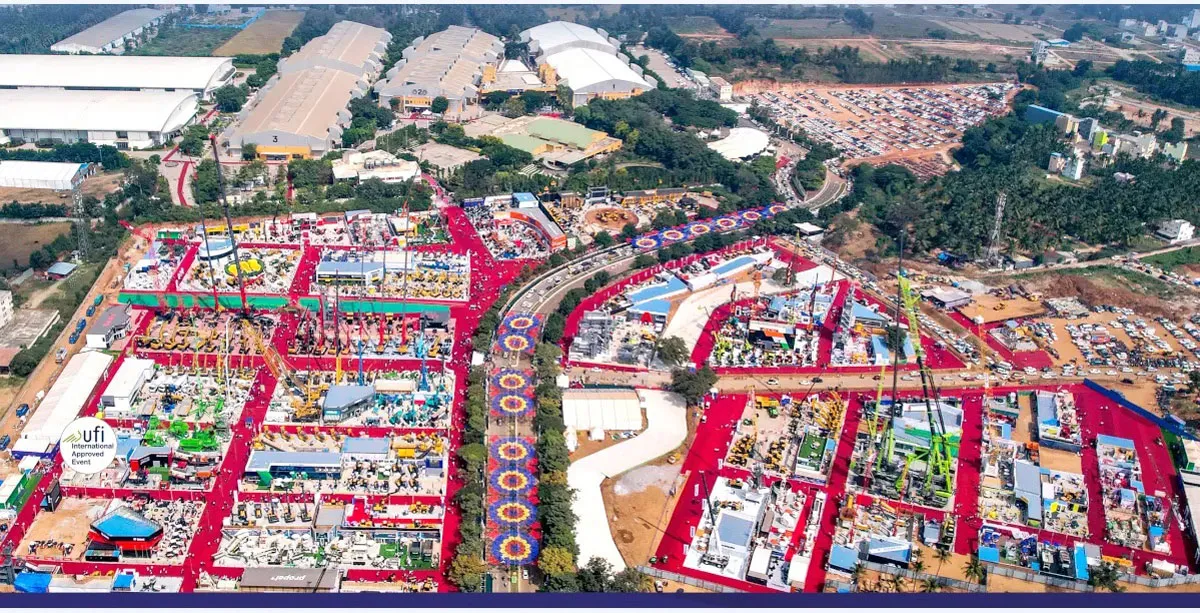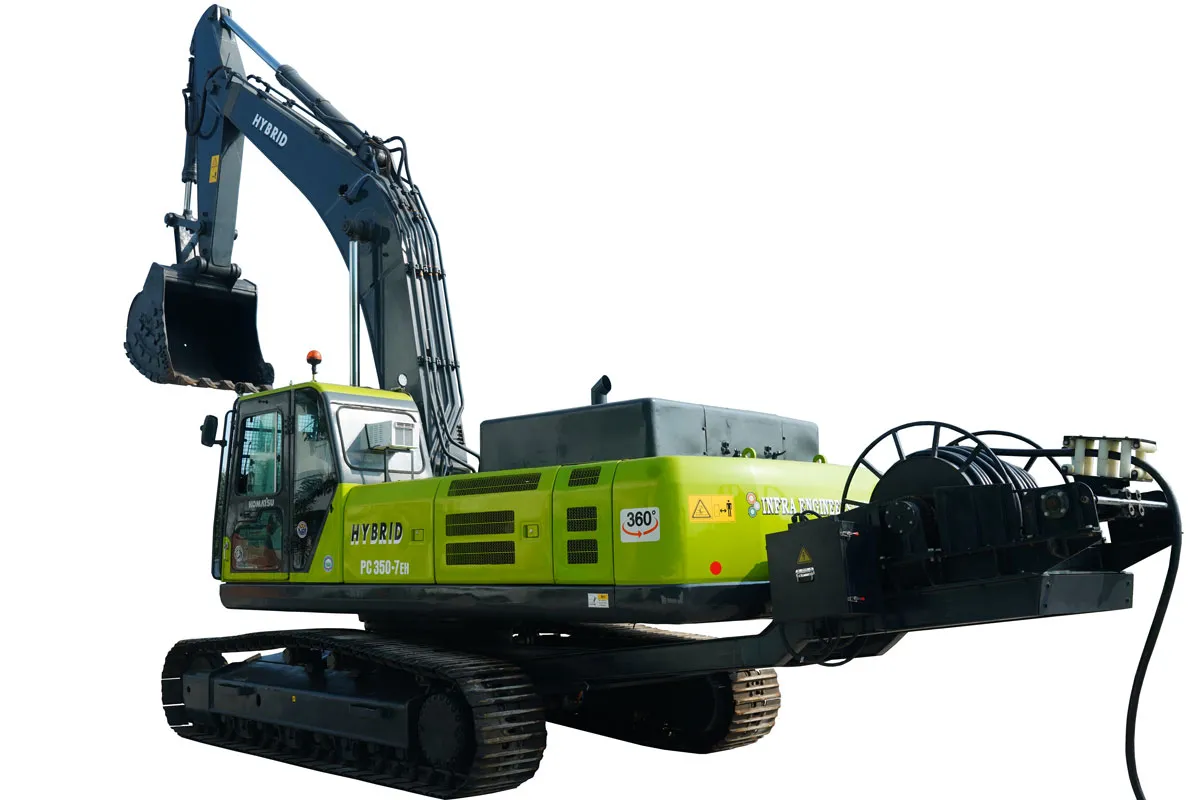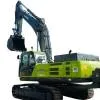- Home
- Real Estate
- Better safe than sorry
Better safe than sorry
You know that the Indian construction industry is the second-largest employer after agriculture; a fast-growing sector, and a major contributor to the GDP. Here's the flipside - the unenviable tag of being the most dangerous Indian industry to work in, recording the world's highest accident rate amongst construction workers. In fact, statistics from the International Labour Organisation show that 165 out of every 1,000 construction workers are injured on the job. Globally, construction labour accounts for 7.5 per cent of the labour force and suffers 16.4 per cent of fatal occupational accidents.
Tough questions
In the immediate aftermath of accidents, such as the recent ones causing fatalities at Metro Rail construction sites in Chennai and Mumbai, questions arise about the sufficiency of reactive provisions for protecting workers' rights. Preventative measures that could have averted the untoward eventualities also come under the scanner.
In the context of labour rights, Dr RK Elangovan, Director In-Charge, Regional Labour Institute, Chennai, says "Sufficient legislation exists to protect the rights of workers in the eventuality of a mishap during construction." He cites the Building and Other Construction Workers (Regulation of Employment and Conditions of Service) Act, 1996 (BOCWA); Building and Other Construction Workers (Regulation of Employment and Conditions of Service) Central Rules, 1998; Workmen's Compensation Act; and the Welfare Board as the main pieces of reactive legislation applicable to the sector.
Legislation mandates preventative safety measures. In that, some measure of indifference towards safety is visible, which is partially attributed to several peculiarities of the construction industry vis-à-vis the manufacturing sector. Construction projects in India mandate the setting up of a temporary site and the employment of huge numbers of contractual labour. Typically, the composition of this team keeps changing. Professor SVS Raja Prasad, Head (Safety), National Institute of Construction Management and Research, Hyderabad, aptly says that employees participating in a project have much less shared history than those in regular companies.
Primarily, this faulty social environment generates greater risks at site because contractors tend to pay less attention and invest fewer resources into the health and safety education and site safety of temporary workers. However, "even contractors that invest in training, motivating and involving this transient, highly mobile workforce in corporate safety efforts face challenges because they carry out work that is constantly changing and where the risks are generally higher," opines S Sathyanarayana, Head-EHS, Infrastructure IC, L&T Construction.
Risky business
Complex working conditions pose high risks. At Metro sites, for instance, Shankar N Srivastava, Director, Engineer Pro Consultants, lists the underfoot or underground conditions, surrounding disturbances of moving traffic, paucity of space to provide adequate support, untimely working hours, pressure of completing the work and, rarely, equipment failures or negligence by operating personnel or the design of the structure as contributing to mishaps. In case of mines, uncertain geology accentuates these challenges.
Meanwhile, RN Tripathy, Head-EHS, MMH IC, L&T Construction, points out that major activities such as excavation, blasting, material handling, fabrication works, usage of plant and machinery, gas cutting, welding and grinding, structural and equipment erection, and working at a height all require stringent measures for safe execution.
Falls, transportation accidents, contact with objects and equipment, and exposure to harmful substances or environments cause 94 per cent of fatalities in the private construction industry, writes T Sornakumar, Professor in the Mechanical Engineering Department, Thiagarajar College of Engineering, Madurai, in a paper on improving the industry's safety performance.
Controlling just these highest-risk activities could make a significant difference to site safety because greater risk correlates to the higher occurrence of human failure - both unsafe actions (worker errors) and unsafe conditions (error provocative situations) leading to accidents, injuries and property damage. A theory by American industrial safety pioneer Herbert William Heinrich in the 1930s attributes 88 per cent of accidents to unsafe acts, 10 per cent to unsafe conditions and, most significantly, only 2 per cent to unavoidable circumstances. Research and experience also indicate that 50 per cent of unsafe behaviour is identified or noticeable at any plant at any given point of time and that the paucity of safety awareness amongst employees shows up as unsafe behaviour.
Safety checks
Putting these observations into practice would entail implementing a host of proactive preventative measures beyond legislation. Indeed, Professor Prasad believes that the construction industry needs to do much more than just depend on reactive data. "A new proactive paradigm for measuring the safety performance of construction sites would provide essential feedback on performance before incidents occur," he emphasises.
"In addition to meeting compliance with legal provisions, safety depends on effective training for creating required awareness and competency at all levels," agrees Madan Kulkarni, Director, National Safety Council. "Awareness and training together will help percolate safe practices to workers."
For instance, BE Billimoria & Co Ltd, winner of the CIDC Vishwakarma Award for Construction Health, Safety & Environment 2012, has developed Behaviour Best Safety (BBS) routine checks to continuously monitor the actions of workers and detect and correct unsafe and inaccurate behaviour. According to Harshal Hirde, AGM-Safety, BE Billimoria & Co Ltd, "As an OHSAS 18001 accredited company, we have appointed appropriately qualified safety officers who implement these campaigns to improve the skills of workers and show them that they are responsible for their safety. Every month, a special team sits together to decide which behavioural area will be assessed, which is then implemented."
Proactive paradigm
Proactive safety measures also entail establishing extensive safety standards and regular safety measurements. C&C Constructions Ltd does this by preparing customised safety manuals for each project, at the outset. According to PK Aggarwal, Chief General Manager (Buildings), C&C Constructions Ltd, "This ensures that we apply some thought to safety procedures and processes necessary for site safety and enhancing worker productivity. Safety managers are appointed to ensure adherence to this code. They are assisted by safety supervisors, stewards and first-aiders. We also establish accountability and responsibility for each safety provision; otherwise, everyone's responsibility becomes nobody's responsibility. Clear guidelines help to fix responsibility for untoward incidents, in the worst-case scenario."
Standard operations cover actual work processes as well as mock safety drills because it is important to prepare for any eventuality. "In the worst-case scenario, the workforce must know how to protect itself from harm and evacuate the area," adds Hirde.
Safety measurement or evaluation helps identify and work towards eliminating problem areas. Professor Prasad emphasises the conduct of safety sampling surveys and overall safety performance evaluations by internal senior safety engineers and external qualified lead safety auditors to eliminate unsafe actions and conditions that contribute to accidents and injuries.
Evaluation determines practical compliance with safety instructions and regulations as well as shows up the need for new safety norms. "Safety induction for staff entering the site; the mandatory use of personal safety equipment (boots, helmets, harness, gloves and disposable mask); avoidance of emergency and short-cut procedures; and the provision of proper tool plugs, proper climbing leaders and new or strong cable and slings for cranes and lifting equipment are essentials for site safety," points out Pankaj Agarwal, President-EPC, GVK. "Using equipment appropriately helps as well; for example, workers should not move in material hoists and loaders, etc. Tool box meetings are mandated to establish the dos and don'ts for new kinds of activities."
Safety record
A company's safety record is upheld by duly verified physical documents demonstrating adherence to safety measures. Contractors are mandated to report untoward incidents to the labour authorities, upon which the matter is investigated. Then, it becomes imperative for the company to be able to prove adherence to legal safety provisions through proper documentation. "As the principal employer is ultimately responsible for labour, nowadays employers are clearly stipulating in the contract the safety norms to be followed and the responsibility for obtaining CAR (Contractor's All Risk) insurance policies, which cover machinery, workmen and work-in-progress," explains Aggarwal. "Premiums range between 0.5 and 1 per cent of tender cost. While such policy covers don't neutralise the entire compensation that a contractor might need to pay, they do cover the most part. A contract might stipulate that the contractor obtains the necessary cover and if this is not done by the contractor, the client is at liberty to get it implemented and deduct the amount from available dues."
According to Hirde, "Site record-keeping should start as soon as a construction site is registered and the license to begin work is obtained. Authorities conduct checks to verify compliance to the norms stipulated by BOCWA, the Workmen's Compensation Act, etc, including safety practices, training at site and other measures. Companies are given some time to rectify lacunae found."
No such leniency is shown if accidents occur owing to the failure to comply with safety norms. This is considered a criminal offence. Last year, the vice-president (projects), safety in-charge and mechanical engineer of a construction company were arrested following a negligence case registered after five workers were killed when an upraised platform at a construction site in Bengaluru plunged 150 ft. Penalties can also include a fine and blacklisting of the construction company from bidding for or executing certain kinds of projects - a heavy price to pay.
Price to pay
Arguably, proactive measures will pick up only when construction companies accept that accidents are not an outcome of employing a larger workforce and that safety concerns don't lead to greater cost and reduced productivity. "Accident and fatality rates depend more on the safety culture of the industry and the safety management system of the organisation," explains Kumar Shailendra, Chief EHS Manager, PT&D, L&T Construction. "And safety evaluation and control save money. The delays and total expenses following an accident are usually much higher than the original cost of establishing and maintaining safety standards."
"Productivity and safety go hand-in-hand and are not mutually exclusive," says Paul Grant, Head of Scaffolding + Access-India, Harsco. "We believe that ultimately having the right safety programme, underpinned by the right training and right equipment, will always lead to maximum productivity."
For his part, Aggarwal sees proactive safety measures as an investment that genuinely impacts bottom lines because of time saving from eliminating project interruptions (owing to accidents), reduced payouts to accident victims, reduced escalation payouts because of project delays, reduced potential damage to construction assets, and the work-in-progress and goodwill taking extra care of what employees generate. C&C Infrastructure's safety budget hovers between 1 and 1.25 per cent of the project cost, with an estimated return in the form of hidden costs to the tune of 10 times the actual cost of claim and accounts for items such as employee replacement costs, loss of use and damaged product.
Technology matters
Deploying technology is a preventative safety measure too. Kulkarni feels that greater awareness about this has led to increased technology investments and improved site safety. "In conjunction with the adoption of management systems, wide-scale training and applying other available resources, technology can enhance the safety of workers as well as improve the outcome of construction," he observes. "Scaffolding, for instance, has seen significant change over the past decade."
"As the construction market matures, demand for world-class safety compliant access systems is increasing," adds Grant. "When building owners commit to making safety a high priority, the circumstances become right for us to work with them. They recognise that our products protect their workforce at heights and increase productivity."
"Fully enclosed workspaces, upto three working levels, created by our advanced systems can eliminate falls and make life easier for workers," says Anupam Sharma, CEO, Doka India Pvt Ltd. "This, in turn, improves productivity. Surrounding buildings and their occupants are protected as well. Moreover, the climbing system saves the crane time."
Superior technology can make high-risk operations involving cranes and other modern construction equipment safer. For instance, Manoj Agarwal, National Head-Sales & Marketing, Escorts Construction Equipment, lists desirable crane features that improve the man-machine integration and thereby help increase site efficiency and safety. "Cabins positioned for better visibility, compact dimensions for better control and less turning radius, features like slotted boom, rope compensation, point of stability, travel speed control, audiovisual alarms against over-loading and over hoisting with cut off, reverse or side cameras, proximity switches, angle indicators, lateral and longitudinal tilt indicators, GPRS systems, collectively help; provided the operational and maintenance teams are trained in their usage," he elaborates.
No blind application
Underline the proviso for applying technology safety: regular training of the operation and maintenance teams. "Applying technology can reduce reliance on unskilled labour and enhance safety, as long as competent, qualified, experienced and licensed operators are employed," agrees Aggarwal. "Cutting corners in employment costs can have disastrous consequences."
At L&T Construction's sites, the most modern construction equipment is used to reduce manual exertion as far as possible. While devising the construction methodology, due care is taken to mitigate risks through engineering and admini-strative control measures rather than pure reliance on the skill and experience of the workforce.
Carefully considering the application of technology, howsoever simple, is another rider. At BE Billimoria & Co Ltd, a lot of thought is given to each safety aid, even something as simple as a safety net. "We have had special three-layered safety nets developed and tested for load to ensure that even a small piece of stone doesn't fall to the ground," Hirde tells us. "Vertical and horizontal nets and closures help protect dangerous edges and shafts."
Industry-wide measures
As proactive measures are optional, Moushumi Basu, Associate Professor at the School of International Studies, Jawaharlal Nehru University, and Member, People's Union for Democratic Right (PUDR), advocates making it mandatory for contracts to clearly spell out safety provisions and quality norms for safety equipment like helmets and nets, and introducing heavy penalties for violating safety provisions. Random checks by authorities could throw up instances of gross disregard for site safety. "Standard safe practices such as the use of safety belts and nets are routinely compromised at high-rise work sites," states Basu. "A High Court-appointed Monitoring Committee examining allegations about the violation of workers' rights at the Commonwealth Games construction sites, during proceedings of a PIL filed by PUDR in January 2010, confirmed that companies were actually charging workers for safety equipment. Agencies reported as many as 142 deaths in this case. As many construction companies are reluctant to introduce safety systems, let alone evaluate and improve upon them, authorities must conduct compulsory checks."
Overall, larger construction companies are implementing site safety standards more accurately with Agarwal of Escorts pointing out that the change is visible: areas are being earmarked, signage and instruction sheets are being displayed, and fewer accidents are happening. In part, developers are mandating contractors to invest in safety-enhancing technology.
"Clients, developers and promoters are playing a big role to further safety as well," agrees Srivastava. In spite of the fact that no client pays for safety separately in India, with their prime prerogative appearing to be lowering the project value to the minimum possible,
the construction industry is more conscious about safety. "Robust safety systems practiced in developed countries are today a norm for large and medium-sized companies in India," he adds. "Many companies have even started reporting fatal accdents and safety statistics in their balance sheets." In future, he'd like to see clients enter into a dialogue with contractors on safety measures applicable to the specific project. Roping in highly experienced consultants to monitor the processes at site, the rewards and penalties related to safety, communication and review methods at the bidding stage itself would help as well.
"Specifying the applicant's safety index - the accident rate vis-à-vis industry averages - in the pre-tender qualifying conditions would help make the industry a safer workplace," proposes Aggarwal.
To be sure, safety is a package deal. Project specifications, regulations and self-initiated, proactive, preventative measures go together; this is why Dr Elangovan says it will take nothing short of the implementation of legislation enacted in 1996 coupled with stakeholders' efforts, as highlighted in the National Policy on SHE at the workplace, to enhance safety and health in building and other construction works. It's time to play it safe.
Mitigate risks arising from worker's skill deficiency
L&T Construction has adopted these measures and systems to motivate workers and mitigate the risks arising from their skill deficiency: Ascertain the suitability of workers before deployment: Their physical fitness, knowledge about the activity, and previous experience is checked. Workmen involved in high-risk work, such as operators, drivers, welders, scaffolders, etc, are also subjected to standard medical tests. Workmen must also pass a height test to be authorised to work at heights.
EHS induction training: Fit workmen are sent for EHS induction training that covers classroom training and practical exercises and is delivered in different regional languages.
Access control: Personal records of all workmen are digitised and tagged with their fingerprints or face recognition and they are issued with identity cards. Access to and from site is controlled to keep a check on unauthorised entry and know the exact count of workmen at a project site.
Safety monitoring: Workmen are closely monitored by trained frontline supervisors and safety stewards deployed in a ratio of 1:100 workmen at project sites.
Workmen motivation: Monthly site-based competitions are organised to select and
reward the safest workmen, based on their EHS performance. Safety month celebration: January is celebrated as the safety month in all L&T jobsites in India and abroad to highlight the importance of safety in the workplace through special campaigns and competitions.
L&T's learning
A detailed analysis of accidents can show up areas needing significant improvement. L&T Buildings & Factories IC's analysis of incidents in the past financial year has revealed that it needs to work on these key focus areas: Lift shaft and floor opening protection Working on peripheral platforms Temporary electrical distribution system L&T has established control measures for effectively controlling these risks. Standard operating procedures (SOPs) with drawings and requirements are circulated to project sites to enable uniform implementation of related precautionary measures. Cluster-wise committees monitor and evaluate the implementation level. Now, these efforts are being stepped up.
P Nagarajan, DGM & Head - EHS, Buildings & Factories IC, L&T Construction, explains how this will be done. "Introducing a zero tolerance policy in the implementation of SOPs, mandating active involvement in EHS implementation, campaign and competitions, continuous monitoring through leading EHS indicators and following the set benchmark EHS standards for implementation and evaluating will improve standards in these focus areas," he says.
Available standards are as follows:
Lift shaft and floor opening protection: Standards include standard protection systems for floor openings, standard protection systems for wall and lift shaft openings and work permit system for removing protection Working on peripheral platforms: Standards provide for strictly following scheme drawings, manufacturer safety guidelines and scaffold tag systems and employing only approved scaffolders and scaffold inspectors.
Temporary electrical distribution system: Standards cover standardised electrical distribution systems, installation of residual and over current protection devices, regular monitoring of devices and obtaining work permit and LOTO during maintenance.
Remedy unsafe acts and conditions
Kumar Shailendra, Chief EHS Manager, PT&D, L&T Construction, lists the leading unsafe acts and unsafe conditions leading to accidents:
Unsafe acts:
Use of defective equipment, failure to use personal protective equipment Unsafe material handling, failure to follow safety procedures Poor housekeeping, attitude problems such as horseplay, etc
Unsafe conditions:
Improper guarding of equipment, platform, improper illumination, ventilation Hazardous chemicals, explosives, etc, improper dress Poor site layout, housekeeping, defective tools and equipment Poor tag-out and lock-out practices, poor maintenance Unsanitary conditions, unsafe design and construction
Safe construction: processes and outcomes Safety pertains to the construction process and the resulting built environment. "But the onus to choose the right technology to ensure safety for construction workers as well as building occupants and infrastructure users lies on the contractor/ developer", says Pankaj Agarwal, President - EPC, GVK. Technology depends on site conditions, environmental conditions and end use. For instance, technology for the treatment of water depends on the quality and mineral content in water at a particular site. Inappropriate technology or dosages create safety hazards as well. Building material technologies vary for residential, commercial and industrial areas. Road construction technologies depend on climatic conditions. Wrong usage can create safety hazards.
CHARU BAHRI asks a few tough questions to pinpoint how the incidence of accidents at high-profile and low-key project sites can be reduced.You know that the Indian construction industry is the second-largest employer after agriculture; a fast-growing sector, and a major contributor to the GDP. Here's the flipside - the unenviable tag of being the most dangerous Indian industry to work in, recording the world's highest accident rate amongst construction workers. In fact, statistics from the International Labour Organisation show that 165 out of every 1,000 construction workers are injured on the job. Globally, construction labour accounts for 7.5 per cent of the labour force and suffers 16.4 per cent of fatal occupational accidents.Tough questionsIn the immediate aftermath of accidents, such as the recent ones causing fatalities at Metro Rail construction sites in Chennai and Mumbai, questions arise about the sufficiency of reactive provisions for protecting workers' rights. Preventative measures that could have averted the untoward eventualities also come under the scanner.In the context of labour rights, Dr RK Elangovan, Director In-Charge, Regional Labour Institute, Chennai, says Sufficient legislation exists to protect the rights of workers in the eventuality of a mishap during construction. He cites the Building and Other Construction Workers (Regulation of Employment and Conditions of Service) Act, 1996 (BOCWA); Building and Other Construction Workers (Regulation of Employment and Conditions of Service) Central Rules, 1998; Workmen's Compensation Act; and the Welfare Board as the main pieces of reactive legislation applicable to the sector.Legislation mandates preventative safety measures. In that, some measure of indifference towards safety is visible, which is partially attributed to several peculiarities of the construction industry vis-à-vis the manufacturing sector. Construction projects in India mandate the setting up of a temporary site and the employment of huge numbers of contractual labour. Typically, the composition of this team keeps changing. Professor SVS Raja Prasad, Head (Safety), National Institute of Construction Management and Research, Hyderabad, aptly says that employees participating in a project have much less shared history than those in regular companies.Primarily, this faulty social environment generates greater risks at site because contractors tend to pay less attention and invest fewer resources into the health and safety education and site safety of temporary workers. However, even contractors that invest in training, motivating and involving this transient, highly mobile workforce in corporate safety efforts face challenges because they carry out work that is constantly changing and where the risks are generally higher, opines S Sathyanarayana, Head-EHS, Infrastructure IC, L&T Construction.Risky businessComplex working conditions pose high risks. At Metro sites, for instance, Shankar N Srivastava, Director, Engineer Pro Consultants, lists the underfoot or underground conditions, surrounding disturbances of moving traffic, paucity of space to provide adequate support, untimely working hours, pressure of completing the work and, rarely, equipment failures or negligence by operating personnel or the design of the structure as contributing to mishaps. In case of mines, uncertain geology accentuates these challenges.Meanwhile, RN Tripathy, Head-EHS, MMH IC, L&T Construction, points out that major activities such as excavation, blasting, material handling, fabrication works, usage of plant and machinery, gas cutting, welding and grinding, structural and equipment erection, and working at a height all require stringent measures for safe execution.Falls, transportation accidents, contact with objects and equipment, and exposure to harmful substances or environments cause 94 per cent of fatalities in the private construction industry, writes T Sornakumar, Professor in the Mechanical Engineering Department, Thiagarajar College of Engineering, Madurai, in a paper on improving the industry's safety performance.Controlling just these highest-risk activities could make a significant difference to site safety because greater risk correlates to the higher occurrence of human failure - both unsafe actions (worker errors) and unsafe conditions (error provocative situations) leading to accidents, injuries and property damage. A theory by American industrial safety pioneer Herbert William Heinrich in the 1930s attributes 88 per cent of accidents to unsafe acts, 10 per cent to unsafe conditions and, most significantly, only 2 per cent to unavoidable circumstances. Research and experience also indicate that 50 per cent of unsafe behaviour is identified or noticeable at any plant at any given point of time and that the paucity of safety awareness amongst employees shows up as unsafe behaviour.Safety checksPutting these observations into practice would entail implementing a host of proactive preventative measures beyond legislation. Indeed, Professor Prasad believes that the construction industry needs to do much more than just depend on reactive data. A new proactive paradigm for measuring the safety performance of construction sites would provide essential feedback on performance before incidents occur, he emphasises.In addition to meeting compliance with legal provisions, safety depends on effective training for creating required awareness and competency at all levels, agrees Madan Kulkarni, Director, National Safety Council. Awareness and training together will help percolate safe practices to workers.For instance, BE Billimoria & Co Ltd, winner of the CIDC Vishwakarma Award for Construction Health, Safety & Environment 2012, has developed Behaviour Best Safety (BBS) routine checks to continuously monitor the actions of workers and detect and correct unsafe and inaccurate behaviour. According to Harshal Hirde, AGM-Safety, BE Billimoria & Co Ltd, As an OHSAS 18001 accredited company, we have appointed appropriately qualified safety officers who implement these campaigns to improve the skills of workers and show them that they are responsible for their safety. Every month, a special team sits together to decide which behavioural area will be assessed, which is then implemented.Proactive paradigmProactive safety measures also entail establishing extensive safety standards and regular safety measurements. C&C Constructions Ltd does this by preparing customised safety manuals for each project, at the outset. According to PK Aggarwal, Chief General Manager (Buildings), C&C Constructions Ltd, This ensures that we apply some thought to safety procedures and processes necessary for site safety and enhancing worker productivity. Safety managers are appointed to ensure adherence to this code. They are assisted by safety supervisors, stewards and first-aiders. We also establish accountability and responsibility for each safety provision; otherwise, everyone's responsibility becomes nobody's responsibility. Clear guidelines help to fix responsibility for untoward incidents, in the worst-case scenario. Standard operations cover actual work processes as well as mock safety drills because it is important to prepare for any eventuality. In the worst-case scenario, the workforce must know how to protect itself from harm and evacuate the area, adds Hirde.Safety measurement or evaluation helps identify and work towards eliminating problem areas. Professor Prasad emphasises the conduct of safety sampling surveys and overall safety performance evaluations by internal senior safety engineers and external qualified lead safety auditors to eliminate unsafe actions and conditions that contribute to accidents and injuries. Evaluation determines practical compliance with safety instructions and regulations as well as shows up the need for new safety norms. Safety induction for staff entering the site; the mandatory use of personal safety equipment (boots, helmets, harness, gloves and disposable mask); avoidance of emergency and short-cut procedures; and the provision of proper tool plugs, proper climbing leaders and new or strong cable and slings for cranes and lifting equipment are essentials for site safety, points out Pankaj Agarwal, President-EPC, GVK. Using equipment appropriately helps as well; for example, workers should not move in material hoists and loaders, etc. Tool box meetings are mandated to establish the dos and don'ts for new kinds of activities.Safety recordA company's safety record is upheld by duly verified physical documents demonstrating adherence to safety measures. Contractors are mandated to report untoward incidents to the labour authorities, upon which the matter is investigated. Then, it becomes imperative for the company to be able to prove adherence to legal safety provisions through proper documentation. As the principal employer is ultimately responsible for labour, nowadays employers are clearly stipulating in the contract the safety norms to be followed and the responsibility for obtaining CAR (Contractor's All Risk) insurance policies, which cover machinery, workmen and work-in-progress, explains Aggarwal. Premiums range between 0.5 and 1 per cent of tender cost. While such policy covers don't neutralise the entire compensation that a contractor might need to pay, they do cover the most part. A contract might stipulate that the contractor obtains the necessary cover and if this is not done by the contractor, the client is at liberty to get it implemented and deduct the amount from available dues.According to Hirde, Site record-keeping should start as soon as a construction site is registered and the license to begin work is obtained. Authorities conduct checks to verify compliance to the norms stipulated by BOCWA, the Workmen's Compensation Act, etc, including safety practices, training at site and other measures. Companies are given some time to rectify lacunae found.No such leniency is shown if accidents occur owing to the failure to comply with safety norms. This is considered a criminal offence. Last year, the vice-president (projects), safety in-charge and mechanical engineer of a construction company were arrested following a negligence case registered after five workers were killed when an upraised platform at a construction site in Bengaluru plunged 150 ft. Penalties can also include a fine and blacklisting of the construction company from bidding for or executing certain kinds of projects - a heavy price to pay.Price to payArguably, proactive measures will pick up only when construction companies accept that accidents are not an outcome of employing a larger workforce and that safety concerns don't lead to greater cost and reduced productivity. Accident and fatality rates depend more on the safety culture of the industry and the safety management system of the organisation, explains Kumar Shailendra, Chief EHS Manager, PT&D, L&T Construction. And safety evaluation and control save money. The delays and total expenses following an accident are usually much higher than the original cost of establishing and maintaining safety standards.Productivity and safety go hand-in-hand and are not mutually exclusive, says Paul Grant, Head of Scaffolding + Access-India, Harsco. We believe that ultimately having the right safety programme, underpinned by the right training and right equipment, will always lead to maximum productivity.For his part, Aggarwal sees proactive safety measures as an investment that genuinely impacts bottom lines because of time saving from eliminating project interruptions (owing to accidents), reduced payouts to accident victims, reduced escalation payouts because of project delays, reduced potential damage to construction assets, and the work-in-progress and goodwill taking extra care of what employees generate. C&C Infrastructure's safety budget hovers between 1 and 1.25 per cent of the project cost, with an estimated return in the form of hidden costs to the tune of 10 times the actual cost of claim and accounts for items such as employee replacement costs, loss of use and damaged product.Technology mattersDeploying technology is a preventative safety measure too. Kulkarni feels that greater awareness about this has led to increased technology investments and improved site safety. In conjunction with the adoption of management systems, wide-scale training and applying other available resources, technology can enhance the safety of workers as well as improve the outcome of construction, he observes. Scaffolding, for instance, has seen significant change over the past decade. As the construction market matures, demand for world-class safety compliant access systems is increasing, adds Grant. When building owners commit to making safety a high priority, the circumstances become right for us to work with them. They recognise that our products protect their workforce at heights and increase productivity.Fully enclosed workspaces, upto three working levels, created by our advanced systems can eliminate falls and make life easier for workers, says Anupam Sharma, CEO, Doka India Pvt Ltd. This, in turn, improves productivity. Surrounding buildings and their occupants are protected as well. Moreover, the climbing system saves the crane time.Superior technology can make high-risk operations involving cranes and other modern construction equipment safer. For instance, Manoj Agarwal, National Head-Sales & Marketing, Escorts Construction Equipment, lists desirable crane features that improve the man-machine integration and thereby help increase site efficiency and safety. Cabins positioned for better visibility, compact dimensions for better control and less turning radius, features like slotted boom, rope compensation, point of stability, travel speed control, audiovisual alarms against over-loading and over hoisting with cut off, reverse or side cameras, proximity switches, angle indicators, lateral and longitudinal tilt indicators, GPRS systems, collectively help; provided the operational and maintenance teams are trained in their usage, he elaborates.No blind applicationUnderline the proviso for applying technology safety: regular training of the operation and maintenance teams. Applying technology can reduce reliance on unskilled labour and enhance safety, as long as competent, qualified, experienced and licensed operators are employed, agrees Aggarwal. Cutting corners in employment costs can have disastrous consequences. At L&T Construction's sites, the most modern construction equipment is used to reduce manual exertion as far as possible. While devising the construction methodology, due care is taken to mitigate risks through engineering and admini-strative control measures rather than pure reliance on the skill and experience of the workforce. Carefully considering the application of technology, howsoever simple, is another rider. At BE Billimoria & Co Ltd, a lot of thought is given to each safety aid, even something as simple as a safety net. We have had special three-layered safety nets developed and tested for load to ensure that even a small piece of stone doesn't fall to the ground, Hirde tells us. Vertical and horizontal nets and closures help protect dangerous edges and shafts. Industry-wide measures As proactive measures are optional, Moushumi Basu, Associate Professor at the School of International Studies, Jawaharlal Nehru University, and Member, People's Union for Democratic Right (PUDR), advocates making it mandatory for contracts to clearly spell out safety provisions and quality norms for safety equipment like helmets and nets, and introducing heavy penalties for violating safety provisions. Random checks by authorities could throw up instances of gross disregard for site safety. Standard safe practices such as the use of safety belts and nets are routinely compromised at high-rise work sites, states Basu. A High Court-appointed Monitoring Committee examining allegations about the violation of workers' rights at the Commonwealth Games construction sites, during proceedings of a PIL filed by PUDR in January 2010, confirmed that companies were actually charging workers for safety equipment. Agencies reported as many as 142 deaths in this case. As many construction companies are reluctant to introduce safety systems, let alone evaluate and improve upon them, authorities must conduct compulsory checks. Overall, larger construction companies are implementing site safety standards more accurately with Agarwal of Escorts pointing out that the change is visible: areas are being earmarked, signage and instruction sheets are being displayed, and fewer accidents are happening. In part, developers are mandating contractors to invest in safety-enhancing technology. Clients, developers and promoters are playing a big role to further safety as well, agrees Srivastava. In spite of the fact that no client pays for safety separately in India, with their prime prerogative appearing to be lowering the project value to the minimum possible, the construction industry is more conscious about safety. Robust safety systems practiced in developed countries are today a norm for large and medium-sized companies in India, he adds. Many companies have even started reporting fatal accdents and safety statistics in their balance sheets. In future, he'd like to see clients enter into a dialogue with contractors on safety measures applicable to the specific project. Roping in highly experienced consultants to monitor the processes at site, the rewards and penalties related to safety, communication and review methods at the bidding stage itself would help as well. Specifying the applicant's safety index - the accident rate vis-à-vis industry averages - in the pre-tender qualifying conditions would help make the industry a safer workplace, proposes Aggarwal. To be sure, safety is a package deal. Project specifications, regulations and self-initiated, proactive, preventative measures go together; this is why Dr Elangovan says it will take nothing short of the implementation of legislation enacted in 1996 coupled with stakeholders' efforts, as highlighted in the National Policy on SHE at the workplace, to enhance safety and health in building and other construction works. It's time to play it safe. Mitigate risks arising from worker's skill deficiency L&T Construction has adopted these measures and systems to motivate workers and mitigate the risks arising from their skill deficiency: Ascertain the suitability of workers before deployment: Their physical fitness, knowledge about the activity, and previous experience is checked. Workmen involved in high-risk work, such as operators, drivers, welders, scaffolders, etc, are also subjected to standard medical tests. Workmen must also pass a height test to be authorised to work at heights. EHS induction training: Fit workmen are sent for EHS induction training that covers classroom training and practical exercises and is delivered in different regional languages. Access control: Personal records of all workmen are digitised and tagged with their fingerprints or face recognition and they are issued with identity cards. Access to and from site is controlled to keep a check on unauthorised entry and know the exact count of workmen at a project site. Safety monitoring: Workmen are closely monitored by trained frontline supervisors and safety stewards deployed in a ratio of 1:100 workmen at project sites. Workmen motivation: Monthly site-based competitions are organised to select and reward the safest workmen, based on their EHS performance. Safety month celebration: January is celebrated as the safety month in all L&T jobsites in India and abroad to highlight the importance of safety in the workplace through special campaigns and competitions. L&T's learning A detailed analysis of accidents can show up areas needing significant improvement. L&T Buildings & Factories IC's analysis of incidents in the past financial year has revealed that it needs to work on these key focus areas: Lift shaft and floor opening protection Working on peripheral platforms Temporary electrical distribution system L&T has established control measures for effectively controlling these risks. Standard operating procedures (SOPs) with drawings and requirements are circulated to project sites to enable uniform implementation of related precautionary measures. Cluster-wise committees monitor and evaluate the implementation level. Now, these efforts are being stepped up. P Nagarajan, DGM & Head - EHS, Buildings & Factories IC, L&T Construction, explains how this will be done. Introducing a zero tolerance policy in the implementation of SOPs, mandating active involvement in EHS implementation, campaign and competitions, continuous monitoring through leading EHS indicators and following the set benchmark EHS standards for implementation and evaluating will improve standards in these focus areas, he says. Available standards are as follows: Lift shaft and floor opening protection: Standards include standard protection systems for floor openings, standard protection systems for wall and lift shaft openings and work permit system for removing protection Working on peripheral platforms: Standards provide for strictly following scheme drawings, manufacturer safety guidelines and scaffold tag systems and employing only approved scaffolders and scaffold inspectors. Temporary electrical distribution system: Standards cover standardised electrical distribution systems, installation of residual and over current protection devices, regular monitoring of devices and obtaining work permit and LOTO during maintenance. Remedy unsafe acts and conditions Kumar Shailendra, Chief EHS Manager, PT&D, L&T Construction, lists the leading unsafe acts and unsafe conditions leading to accidents: Unsafe acts: Use of defective equipment, failure to use personal protective equipment Unsafe material handling, failure to follow safety procedures Poor housekeeping, attitude problems such as horseplay, etc Unsafe conditions: Improper guarding of equipment, platform, improper illumination, ventilation Hazardous chemicals, explosives, etc, improper dress Poor site layout, housekeeping, defective tools and equipment Poor tag-out and lock-out practices, poor maintenance Unsanitary conditions, unsafe design and construction Safe construction: processes and outcomes Safety pertains to the construction process and the resulting built environment. But the onus to choose the right technology to ensure safety for construction workers as well as building occupants and infrastructure users lies on the contractor/ developer, says Pankaj Agarwal, President - EPC, GVK. Technology depends on site conditions, environmental conditions and end use. For instance, technology for the treatment of water depends on the quality and mineral content in water at a particular site. Inappropriate technology or dosages create safety hazards as well. Building material technologies vary for residential, commercial and industrial areas. Road construction technologies depend on climatic conditions. Wrong usage can create safety hazards.

Powering India’s Infra Future
Excon 2025, South Asia’s largest construction equipment exhibition, is set to return in a grand 13th edition from 9-13 December 2025 at the Bangalore International Exhibition Centre (BIEC), Bengaluru. Organised by the Confederation of Indian Industry (CII) and supported by the Indian Construction Equipment Manufacturers’ Association (ICEMA), the mega event is expected to reinforce its position as the premier marketplace for construction technologies, equipment and infrastructure solutions. The event will host over 1,250 exhibitors, including 160+ international participants, and attract mor..

India will be a strategic part of our growth to 2028
Smiley Monroe is strengthening its footprint in India as a key growth market for its conveyor belts and engineered components business. In this interaction, Prabhu Gopinath, Operations Director, outlines the company’s expansion roadmap, quality focus, and sustainability commitments driving future scale.Can you share Smiley Monroe's journey and its core mission?Smiley Monroe was started in Northern Ireland in 1979, supplying conveyor belts to local quarries. Since then, the company has grown to become a global leader in the supply of endless belts and CNC-cut rubber and plastic part..

Infra Engineers India Pvt Ltd Accelerates Hybrid Excavation
Infra Engineers India Pvt Ltd (IEPL), headquartered in Chennai, has emerged as a trusted name in the used construction equipment business for nearly a decade. What sets IEPL apart is its commitment to research and development, consistently pushing the boundaries of innovation to deliver cutting-edge solutions to the industry.A first-of-its-kind hybrid excavatorAmong IEPL’s most significant achievements is the development of the pioneering Dual Electric & Diesel Hybrid Excavator—the first of its kind in the construction equipment industry, a breakthrough that even major OEMs have yet to..
Latest Updates
Recommended for you
Advertisement
Subscribe to Our Newsletter
Get daily newsletters around different themes from Construction world.
Advertisement
subscribe to the newsletter
Don't miss out on valuable insights and opportunities
to connect with like minded professionals
















